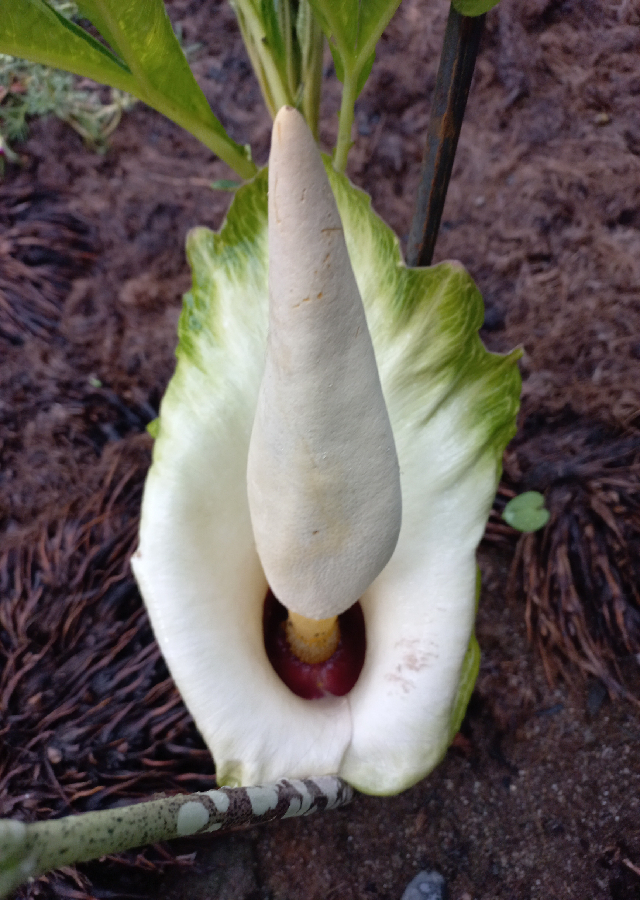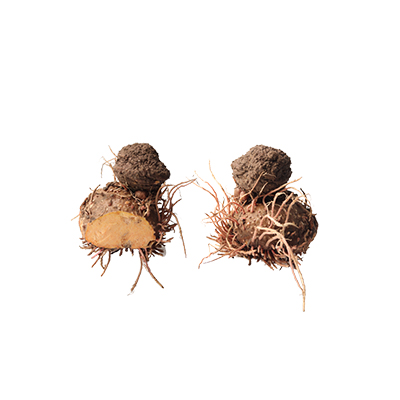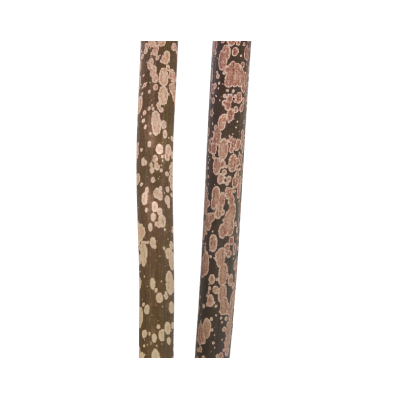Voodoo Lily
Amorphophallus variabilis Blume
Araceae
Location in our garden
Principal



Synonym
Amorphophallus zeylanicus Engl.
Arum stecorarium Zipp. ex Kunth
Brachyspatha variabilis (Blume) Schott
Habitus
Herbaceous. A herbaceous, perennial plant producing 1 - 2 leaves from a tuberous rootstock that can be 15 cm in diameter
Part Used
Tuber
Growing Requirements
Need Shade
Habitat
Forest
Coastal
Terrestrial
Overview
The genus Amorphophallus originates from and is mainly distributed in the Old World, especially in the tropics from Africa to the Pacific Islands, but also extending to temperate areas in China and Japan. The genus is not well known, the total number of species is possibly more than 170. A. variabilis is only known wild in Indonesia (Java, Madura, Kangean Islands). The plant is sometimes gathered from the wild for its edible tuber and young shoots, which are eaten locally.
Vernacular Names
Cumpleng (Javanese), Acung (Sundanese), Lorkong (Madurese).
Agroecology
Usually grows in secondary vegetation, in forest margins and thickets, teak forests, village groves, usually under some shade, up to 700(-900) m altitude. Shade, up to 50-60%, promotes tuber production. The optimum average temperatures range from 25-35 °C. Amorphophallus is found in many different soil types but never under swampy conditions. It prefers well-drained soils with a high humus content. A deep sandy-loamy soil with pH 6-7.5 is favourable; clay soils are unsuitable because they hamper tuber development.
Morphology
- Tuber - up to 15 cm in diameter and 8 cm long, weighing up to 1.5 kg, white, producing seasonal rhizomatous, spindle-shaped offsets 1-1.5 cm long; sometimes 2 leaves are produced.
- Leaves - petiole up to 120 cm × 3.5 cm, smooth, pure green or variegated green-brown-green; blade up to 125 cm in diameter, rachises narrowly winged; leaflets elliptical to lanceolate, 4-34 cm × 2-12 cm.
- Flowers - peduncle 8-120 cm × 0.4-3 cm; spathe 6-23 cm × 5-20 cm, limb strongly reflexed at margin, green with black dots outside, creamy white to pale green or brown inside; spadix usually much longer than spathe, 9-58 cm long.
- Fruits - orange-red, 1-3-seeded.
Cultivation
- Propagated by seeds - usually germinates easily and well.
- By division of offsets.
Chemical Constituents
Saponins, flavonoids, and tannins.
Traditional Medicinal Uses
Treat boils, bites from venomous animals, cuts, controls lipid and blood sugar levels in people with type 2 diabetes mellitus, reduces obesity, prevents and inhibits cancer, and reduces clinical symptoms of diverticulosis (formation of small pouches (diverticula) in the large intestine).
Part Used
Reference Sources
- Fern, Ken. Useful Tropical Plants. (2021). Amorphophallus variabilis. http://tropical.theferns.info/viewtropical.php?id=Amorphophallus+variabilis. 09-11-21
- Plant Resources of South East Asia. Amorphophallus variabilis. https://uses.plantnet-project.org/en/Amorphophallus_(PROSEA). 09-11-21
- Flora & Fauna Web. (2020). Amorphophallus variabilis. https://www.nparks.gov.sg/florafaunaweb/flora/1/6/1661. 09-11-21


